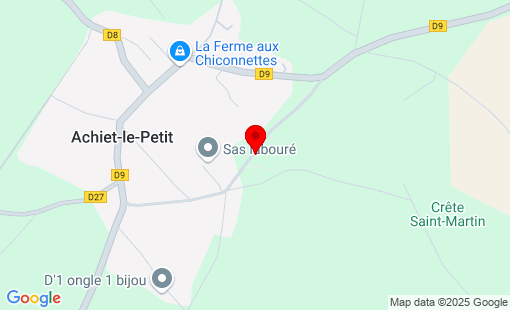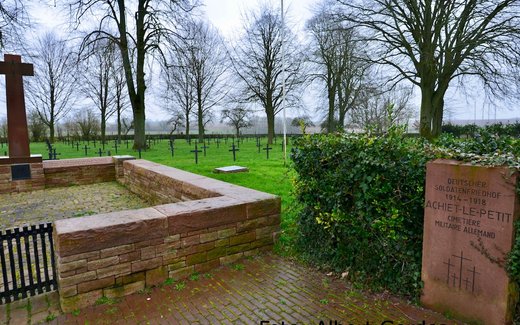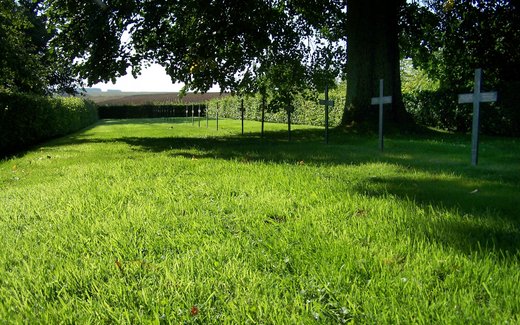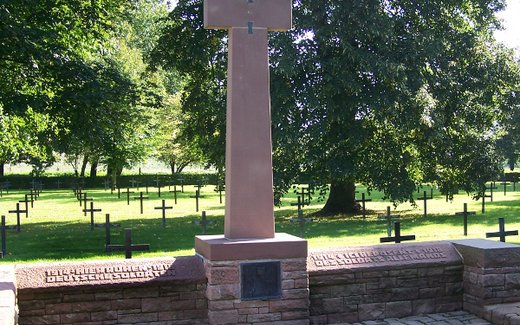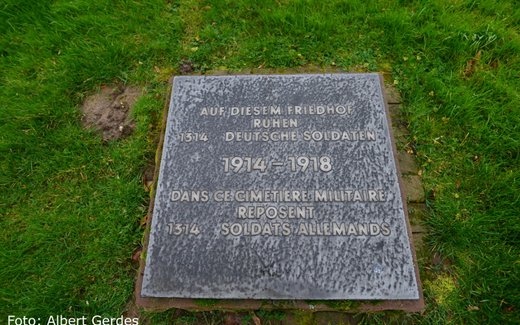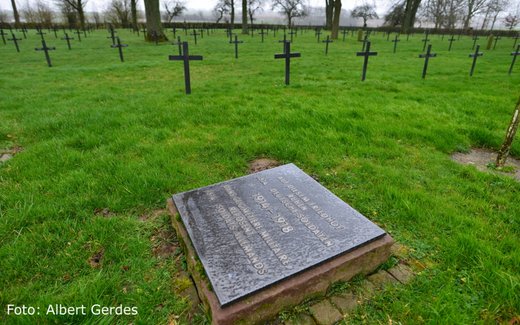France
Achiet-le-Petit
Total Occupation: 1.314 fatalities
Total Occupation: 1.314 fatalities
Contact
D9- 150m vor dem Eintritt in das Dorf, links fahren
Achiet-le-Petit
France
Open all year round
Département Pas-de-Calais 1,314 German war dead First World War The Achiet-le-Petit German military cemetery was established in the fall of 1914 by the German military administration as a collective cemetery. After the war of movement had come to a standstill, the fallen soldiers from the battles during the first weeks of the war, who were scattered around the area and buried where they died, were buried here. Further burials took place in the period up to March 1917 - at which time the area was evacuated by the Germans - and again from the end of March to August 1918, when the area around Achiet-le-Petit fell back into German hands. In 1924, the French military authorities recovered further German dead (more than 300) from 12 surrounding communities and reburied them here. The vast majority of the fallen became victims of the "Battle of the Somme", which began on July 1, 1916 at the gates of Albert and literally suffocated in the mud of the battlefield at the end of November. During this time, the Allies, with terrible losses on both sides, were only able to fight their way forward up to 12 kilometers at the most, with an attack range of 40 kilometers. Those resting here today belonged to units from West Prussia, Upper Silesia, Saxony, Thuringia, Anhalt, Hamburg, Lower Saxony, Westphalia, Baden, Bavaria, Alsace-Lorraine and the Rhineland. Some belonged to Prussian guard regiments and naval infantry regiments. Repair work between the wars The first work to improve the condition of the cemetery was carried out by the German War Graves Commission in 1927 on the basis of an agreement with the responsible French military authorities. Trees and shrubs were planted as well as a hedge framing the site. A small entrance courtyard with forged gates was created using artistic stonework. A high cross made of natural stone reminds visitors of the importance of this site. The graves were planted with uniform plants. However, the problem of permanently marking the graves remained unresolved due to a lack of foreign currency and the outbreak of the Second World War in 1939. After the conclusion of the Franco-German War Graves Agreement of July 19, 1966, the Volksbund Deutsche Kriegsgräberfürsorge e.V. (German War Graves Commission) was able to begin the final design of the German military cemeteries in France from the First World War. Prior to this, young volunteers from the War Graves Commission had already begun with the preliminary gardening work. in 1978, the temporary wooden grave markers were replaced by metal crosses with the names and dates of the dead cast in relief. The German Armed Forces were responsible for transporting the concrete foundations required to erect the metal crosses, most of which were laid by participants in Volksbund youth camps. The two graves of fallen Jews were given a natural stone stele instead of a cross for religious reasons. The Hebrew characters read: 1. (above) "Here rests buried .... ." 2. (below) "May his soul be interwoven into the circle of the living." The entire area then underwent a thorough landscaping overhaul. This included supplementary planting of trees and shrubs as well as the greening of the graves.
